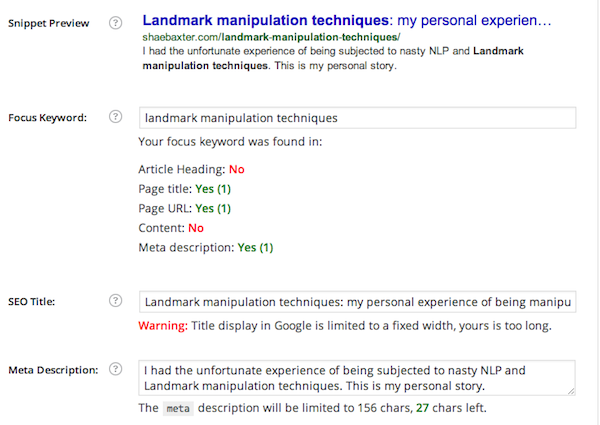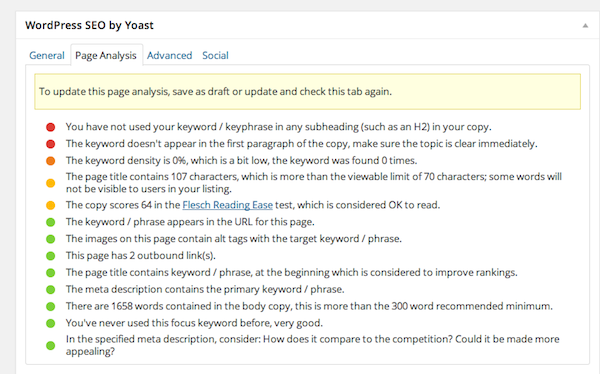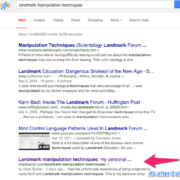How I Got My Blog Post On The First Page Of Google (After 2 Days)
Last week I published my most successful blog post to date.
 By successful I mean it was the most engaged post I’ve had in a while. It has 50 comments and counting, it received the most number of page views on a single day of any post I’ve written, the average time on site is over 8 minutes, it’s had the most opens and clicks of any newsletter I’ve ever sent to date and best of all it’s ranked on the first page of Google.
By successful I mean it was the most engaged post I’ve had in a while. It has 50 comments and counting, it received the most number of page views on a single day of any post I’ve written, the average time on site is over 8 minutes, it’s had the most opens and clicks of any newsletter I’ve ever sent to date and best of all it’s ranked on the first page of Google.
(Note to self. Write about stuff other than SEO.)
Today I want to show you the exact process I used to get my blog post to the first page of Google so you can do the same. You’re getting a first hand insight that normally only my paid clients get access to.
First here’s the PROOF based on non-personalised search results! (Because everybody wants proof right?)
Table of Contents
1. Start with keyword research
This is the most important part but I don’t spend too much time on it. I use the Google Keyword Planner tool and I also use Longtail Pro to check the competitiveness score of a keyword.
In this case, I wasn’t sure which keyword I wanted to rank for. Initially I thought I wouldn’t bother choosing a focus keyword because the post was based on a deeply personal experience I recently went through.
I thought better of it and decided I would choose a specific phrase to rank for. Why not take the opportunity?
The keyword I chose was “landmark manipulation techniques.” I thought about using “manipulation techniques” but I I felt it was too generic. Instead I found my keyword by using the Internet itself.
Here take a look at this:

This is Google’s autocomplete feature at work. As you type in the search box, you can find information quickly by seeing search predictions that might be similar to the search terms you’re typing. For example, as I start to type “landmark manip,” you can see other popular Landmark manipulation related searches.
Some of the signals that Google is using inside of its autocomplete feature is query volume. The fact that these phrases are being predicted means that people are searching for them. This was enough for me to run with this keyword.
This is also a perfect example of a long tail keyword. This is a keyword that individually doesn’t get a lot of searches but if I were to write other posts around this topic then this can add up to quite a lot of traffic to my site. The best part is that long tail keywords have less competition than super high search volume keywords. Remember this. You want to give yourself every chance of ranking for a search term and have people actually find and read your posts. There’s no point writing a post for it never see the light of day on Google’s search results.
Relevancy trumps search volume every time. Having both a relevant keyword with high search volume is hitting the jackpot, but the truth is, that’s very hard to do these days.
Matt Foreman from Traffika told me recently that the higher the volume of searches usually means that keyword is more competitive. Unless your site (and potentially you as an author) are authoritative on the topic, it’s unlikely you’ll appear at the top of the search results page.
Second, Matt told me the more relevant terms with lower volumes of traffic usually convert at a higher rate so the quality is better and ultimately this is what is paying the bills.
So back to my keyword. I could have used “manipulation techniques” or “mind manipulation techniques.” But when I saw “landmark manipulation techniques” on Google’s auto complete, I decided to run with that. If you read the post, you’ll understand the context of it, which is about a man that was a former Landmark participant using nasty manipulation techniques on me. So the keyword I chose is much more specific and relevant.
Your action item: do some quick keyword analysis using the tools I mentioned above and choose a keyword that is relevant to your audience.
2. Write the post without thinking about SEO at all and be original
Yes that’s right. Always write your post first without thinking about the search engines.
Even though I had chosen what the keyword was I wanted to rank for, I didn’t try to write with it in mind. I wrote my post from the heart based on the unfortunate circumstances I recently experienced.
I always aim to write at least 1000 words or more for every blog post and this was no exception. After I wrote the post, I reviewed it and then found a couple of opportunities to use my keyword. I didn’t actually use the exact match keyword – I mentioned that the person I was referring to used to be a former Landmark participant and how my friends made me aware later that I was being manipulated.
The best part about this post is that it’s purely original. Because it’s based on my own personal experience, it’s never been written anywhere else before and it can’t be replicated. It created so much engagement because it was personal and there was a deep emotional connection. And we’ve all heard before that it’s emotion that connects people.
The Web doesn’t need another article on how to make French toast just like it doesn’t need an another article on the health benefits of juicing.
Create valuable insights that can only come from you.
Give your audience something they can’t find anywhere else.
If 50 people have already reported on the same self love tips, then find something else to write about (unless you have information nobody else does). The web needs content. It needs ultra-specific content. It needs to be topical. It’s better for search engines but more importantly it’s better for your readers.
Here’s a mini checklist from Copyblogger for creating high-quality content:
- Go deep with original research
- Share a never-before-seen interview
- Cover a topic comprehensively (don’t aim for a word limit and stop once you reach it)
- Write something a good magazine or journal would print
- Steer clear of short and useless – it ain’t going to go viral
- Spend a LOT of time on detail
Your action item: write your post with your readers in mind first and foremost. Be original and go long and deep.
3. Optimization tactics

This is the WordPress SEO Yoast plugin that I use. It’s great because it can guide you on where you should be using your keyword throughout the post.
So I better explain what I’ve done here. As you can see the focus keyword is “landmark manipulation techniques.” I’ve used the keyword in the page title, meta description and the URL.
These are really important because the snippet you can see above is exactly how it appears in the search results page. You need to write these in such a way that compels people to click on your search engine ad.
You may notice that I haven’t used the keyword in the content at all. This is something I teach and recommend my clients do. In my post, I didn’t do so. If I want to, I could go back and find an opportunity to do so.

The page analysis section indicates other optimization opportunities. Don’t worry if you don’t have a green light on every item. Looking at this, I could have made an effort to use my focus keyword in the first paragraph of the copy.
Remember, I got a page 1 ranking based on what I’ve done so far, which is pretty minimal. If my rankings start to fall, I can always go back and tweak my content with my keyword and get that green light on some of those other items.
In other words, there are a few more optimization opportunities I can take advantage of if I choose to.
Your action item: at the very minimum make sure you write a compelling page title and meta description and optimize these with your focus keyword. Also ensure your URL has your keyword in there too. Let the Yoast SEO plugin guide you on where you can use your keyword.
So how did I drive so much engagement?
On the day I published this post, it received 223 page views. I normally get around 100 page views on the day I publish a new post. The post is now a week old and it’s received a total of 397 page views and 335 unique page views.
What’s more impressive is the average time on page, which is 8 minutes and 8 seconds. This is another reason I always encourage my clients to write longer blog posts than your typical 500 word blog post. You’re giving people an opportunity to stay on your site for longer.
But I believe the real reason this post has been so successful is because I shared such a personal, honest and raw story. I let people take a peep under the hood – to show them that I am completely transparent. People felt angry for me and were being supportive and it showed in the amount of quality comments I received. Running a business isn’t always sipping lattes and glamourous as many people make it out to be. It can be downright hard and sometimes downright ugly as was the case in this particular situation I encountered. I wasn’t afraid to show people my vulnerability. I connected with my audience on an emotional level.
To continue to drive this engagement, next week I’m introducing the Introvert Spotlight where I’ll be showcasing introverted entrepreneurs. Stay tuned for that.
Do you have any audience engagement strategies that have worked well for you?
Your insights may be exactly what someone else needs to drive more engagement and build their brand.
About the Author: Shae Baxter

Creator of Get Your Blog Read By Millions SEO Coaching program for creative women entrepreneurs.
Join me on shaebaxter.com




Thanx for sharing these useful tips. We can Rank Good and Fast on Google Using All these. SEO is for Searcher experience optimization too with Search Engine Optimization.